1. Perform long-tail keyword research to identify the ideal keywords for SEO optimizations.
A “keyword” is any word or phrase that someone types in to a search engine. The backbone of an effective SEO strategy is to identify the high search volume/low competition, relevant keywords to use to optimize your website. This is to ensure that you display your website to your target market and do not waste time optimizing for keywords that will not bring you business. I stress long-tail keywords – multi-word keyword combinations that are specific to how a user would search for a particular product or service, for example: “men’s grey cotton sweater” vs. “sweater” or “best Chicago general practice attorney” vs. “Chicago attorney”. Long-tail keywords are less competitive than short-tail keywords and are typically higher-converting. I recommend using Google’s Keyword Planner Tool to help identify keyword opportunities.
2. Install and configure an SEO plug-in, ahem, Yoast into your website (for WordPress sites).
The SEO plug-in will allow you to easily change the necessary back-end elements of your website for SEO. The plug-in will also allow us to easily create XML sitemaps (help Google to crawl your site faster) and install verification code in the website (for Google Analytics, Google Ads, Remarketing, etc.). To learn more about Yoast, check out their website.
3. Optimize the back-end of the website with SEO keywords. Start with Title Tags, H1 Tags, Meta Descriptions, and URLs.
These back-end elements, primarily Title Tags, are the low-hanging-fruit from a back-end optimization perspective. In some cases just by optimizing these elements with the proper keywords, you’re able to achieve first-page search engine rankings for your target keywords. Meta Descriptions don’t add SEO value in terms of increasing rankings, but they do allow you to clearly describe your product or service so that people will click on your link in a search engine instead of someone else’s.
4. Install and configure custom Google Analytics Dashboards and Reporting.
It’s extremely important that you track the important traffic and performance data for your website and create measurable goals around that data. Google Analytics allows you to track how many people visit your site, where they come from, and what they do when they get there. For instructions on setting up Google Analytics, check out this handy-dandy Ice Nine Academy post that explains Google Analytics Setup, step-by-step.
5. Install and configure Google Webmaster Tools and Submit XML Sitemaps.
If there are any errors in the website i.e. indexing issues, 404s, or if Google flags your site for some reason, you will be notified through Google Webmaster Tools and be able to repair the site issue. Webmaster Tools also allows you to submit XML Sitemaps, which causes Google to crawl your site much faster.
6. Build (better yet, earn) links to your website.
Since the late 1990’s search engines have used links as votes – representing the democracy of the web’s opinion about what pages are important and popular. The engines themselves have refined the use of link data to a fine art, and complex algorithms create nuance evaluations of sites and pages based on this information.
Links aren’t everything in SEO, but search engines can not only analyze the popularity of a website and page based on the number and popularity of pages linking to them, but also metrics like trust, spam, and authority. There are many ways to accrue links, including submitting your site to directories i.e. Yahoo Local, CitySearch, Yellow Pages, and Yelp. Another strategy is to contact the webmasters of blogs/sites in your industry and request that they post some of your (high-quality) content and a link to your site on their site. Building social links through social media posts/engagement is also a strategy that can work very well to accrue quality links.
One very important note on links: Building spammy links to your site, or hiring a company that builds spammy links can be highly detrimental to SEO and your online presence. Sites have been put in “Google Jail” (de-indexed) for this strategy. Only build quality links from trusted sources.
7. Set up “Google My Business” (and in turn, Google+).
When you add your business to Google My Business, you’ll create a Google+ page. By creating a local page on Google My Business, your business information can show up in Google Search, Google Maps, and other Google properties. In addition, your business gets a Google+ page to connect with your customers.
8. Write and upload blog posts and pages of content relating to the keywords you identified in your long-tail keyword research.
Releasing high-quality, well written, relevant content is an integral part of a high-performing SEO strategy. Whether the content is on or off-page, or via a blog, content will help you to organically build links and increase your rankings for target keywords while providing a better user experience for people interested in your industry/brand.
9. Create and actively manage Social Media pages (and use a batch-scheduling tool to make life, much, much easier).
Social media is not always a high-converting channel, but in our highly social online world, it’s important to test various social media channels to identify the channel(s) that provide the highest ROI for your business. Also social media pages receive high rankings on search engines and can help you to accrue organic links into your website. Typically the channels to start with are Facebook, twitter, LinkedIn, and Google+, though this can change depending on your industry. There are tools that make the job of posting to your social media much easier (because really, who has time). I recommend using HootSuite.
10. Test “calls to action” and webpage designs to figure out what will cause people to contact you.
You want to get the visitors to your website to convert: turn visitors into leads/sales and revenue for you. You should be constantly testing the design, copy, and calls to action of your website’s landing pages to find out what will cause the visitors to your website to perform your desired action(s). There are tools that help you to easily create, manage, and A/B Test landing pages though they can be a little expensive. I recommend Unbounce or Optimizely. For more on conversions, check out the Ice Nine Academy post on tracking Micro Vs. Macro conversions.
Well now, that wasn’t so hard, was it?
Now that you have the digital marketing basics covered, you’re heading in the right direction to draw your target market to your site and drive them to convert. But, hey, if any of this seems too daunting, or you have questions about any of these tasks, or if you flat-out don’t want to set up or manage your digital marketing, contact Ice Nine Online. It’s what we do!
Share this Post

